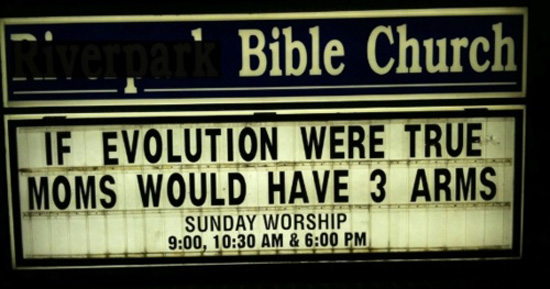by Steven Whitney
All of us take too many things for granted, the rights and rewards we enjoy for which others greatly sacrificed and often even died. On Memorial Day we do reverently honor our fallen, and we still wildly celebrate our nation’s birth on July 4th…but Labor Day, once a holiday that truly paid tribute to workers, has become just a three day weekend of boating, beaches, and barbeque, with nary a thought of the valiant, against-all-odds struggle of both individual and organized labor. These days it should probably be called a Bank Holiday, like in England, because the financial sector has had a great three decades at the expense of labor.
Long forgotten are the inhumane working conditions of the past – sweat shops, child labor, company towns, workplaces incubating extreme physical danger and biological disease, unbearably long hours for barely sustainable wages, and so much more. The many thousands of lives lost in union struggles over the past 200 years have faded in our memory like a sunset disappearing over a lost horizon.
In 1806, the Philadelphia Journeymen Cordwainers union went on strike for higher wages. These already poor shoemakers were bankrupted and convicted on charges of criminal conspiracy, setting a precedent of conservative governments combatting labor from that very first U.S. strike to the present.
Over the next century, the battles between owners and workers – let’s say the 5% against the 95% – were constant and bloody, with state militias, our national Army, city police forces, and hired goons all ganging up to inflict pain and punishment on workers. Men, women, and children alike were beaten, shot (sometimes mowed down by new-fangled machine guns), hanged, executed, imprisoned, and deported. The workers themselves – whether they were miners, carpenters, railway hands, dressmakers, auto or steel workers, skilled or unskilled – were branded as organizers, anarchists, socialists, and communists…all because they wanted a living wage and a better life.
In 1911, seamstresses – women and young girls – at the Triangle Shirtwaist Company threatened a strike for higher wages. Within a few days, their workplace – the top three floors of a ten-story building – was consumed by fire. 147 died – many by jumping out the windows, others burned or were trampled to death as they tried to escape through exits that had been locked. Two weeks later, the company owners were indicted not for murder, but manslaughter.
By the 1920s – an era of unchecked conservative policies advocating deregulation and a pro-business agenda – the U.S. Bureau of Investigation, the forerunner of the FBI, created a strike force called Palmer’s Raiders whose mission was to crush unions and workers under the guise of anti-communism. The violence and injustices visited upon workers was unprecedented, even when measured against the worst bloodbaths in labor’s history – the Haymarket Riot, the Tompkins Square Riot, the Bay View Massacre, the Thibodaux Massacre, the Ludlow Massacre, and literally hundreds more battlegrounds. The Republican congress even passed laws totally abolishing the right of workers to strike, assemble, bargain collectively, and picket.
It took the Great Depression and a Democratic congress to right the ship of state – and the state of unions in America. Early on, FDR recognized the role of labor in revitalizing a financially bankrupt economy when he said:
“It is one of the characteristics of a free and democratic nation that it have free and independent labor unions.”
A mere two months after taking office in 1933, FDR passed the National Industrial Recovery Act, which not only restored all the rights denied them by Republicans, but also contained provisions like minimum wage and maximum hours. Since that time historians have isolated its most important passage:
“Employees shall have the right to organize and bargain collectively through representatives of their own choosing, and shall be free from the interference, restraint, or coercion of employers.”
By empowering workers, America arose from the ashes of the Depression, our country’s infrastructure was built from the ground up, a World War was won, and the largest and most stable middle-class in the world was created. FDR’s pro-labor programs ended the Republican era of plutocratic “job creators,” trickle-down bubble economies, and in 1934 American voters gave Democrats the largest majority either party had (and has) ever held in Congress – 322 Democrats to 103 Republicans – leading to the Fair Labor Standards Act and the greatest period of wealth and job creation, productivity, prosperity, and income equality any nation has ever known.
Today, with the sweatshops and child labor camps gone, we all enjoy the fruits of the labor movement’s long struggle – the 8-hour workday and 5-day week, equal pay for equal work, 2 weeks’ vacation, sick days, higher wages, safe and regulated working environments, health care, collective bargaining, the rights of petition and assembly, worker’s compensation, non-discriminatory employment practices, laws protecting whistleblowers, pension and retirement funds, and, of course, the Family and Medical Leave Act, passed by Clinton’s Democratic congress in 1993. Labor was behind it all – and even aggressively backed Martin Luther King Jr.’s crusade for Equal Rights.
Predictably, starting when Reagan fired the Air Traffic Controllers in 1981, Republicans have consistently tried to turn back every one of those hard-won benefits. In this year’s GOP primaries, a return to child labor was even floated as a viable solution to the economic disaster caused by Bush-Cheney / Republican economic policies. For the last 30 years, the GOP has hacked away at labor and unions. Because of that, wages of American workers now make up the lowest percentage of GDP since 1947, even as corporate profits are the highest in 40 years. That obscene inequality is not a coincidence – it is the priority of the modern Republican party, this year led by Romney and the despicable hypocrisy of Paul Ryan.
So if we are to rebuild a strong Middle Class and keep America a land “of, by, and for the people” – if we are to avoid a dystopian Blade Runneresque future – we must continually recognize the importance of labor’s contribution to the growth and strength of our nation. Most of us – probably 95% or more – are, or came from, the working class, and now is not the time to lose sight of our heritage. Instead, we must pick up the cudgel of those who came before us. Too many of our ancestors actually died – sacrificed their very lives – to give us and not our wealthy overlords the power to determine our own destinies.
This Labor Day, September 3rd, instead of the all-day backyard barbeque, let’s take a few hours to mobilize our faith in ourselves and in the founding principles of our nation by hitting the streets once again to honor and support America’s two greatest assets – the worker and the Middle Class. They are one and the same.
Related Posts:
Chicken Shits: The Slippery Slopes of Chick-fil-A
The Vagina Solution
Fighting Back Part 4: The Big Liar, Intimidation And Revenge
Fighting Back Part 3: Fighting Fire With Fire
When The Past Is Prologue
Fighting Back Part 2: Defining Rovian Politics
Fighting Back
The Electoral Scam
Being Fair
Occupy Reality
Giving. . . And Taking Back
A Tale Of Two Grovers
A Last Pitch For Truth
America: Forget it, Jake. It’s Chinatown.
Gotcha!
























